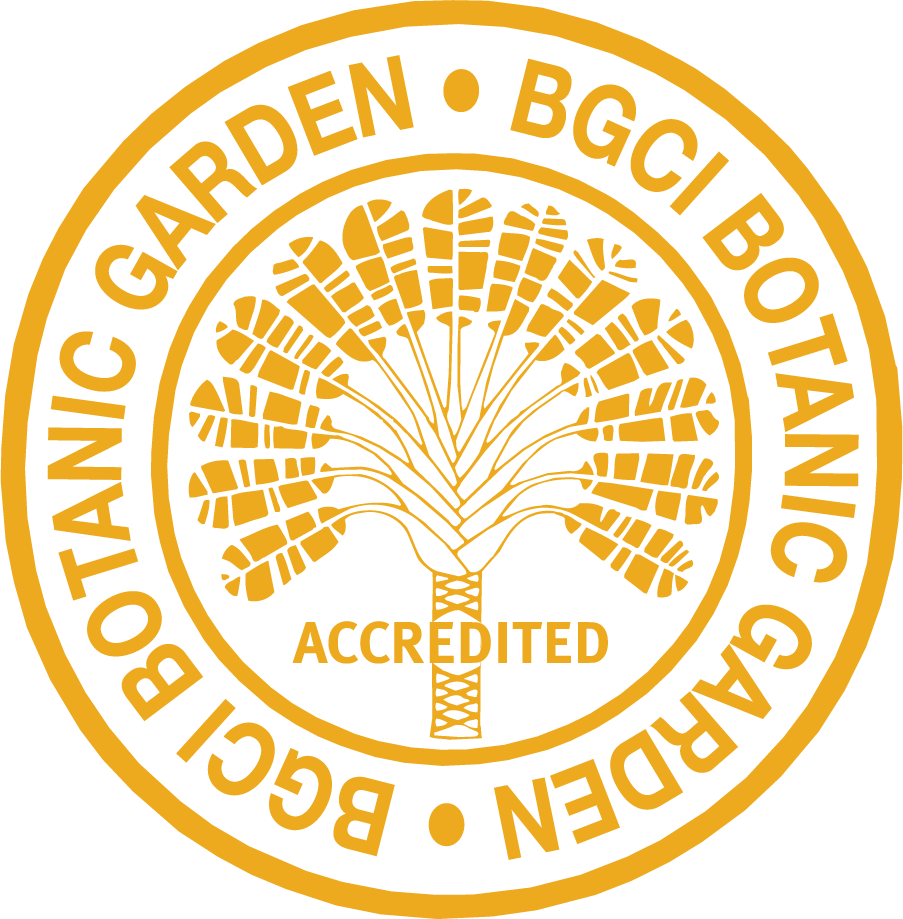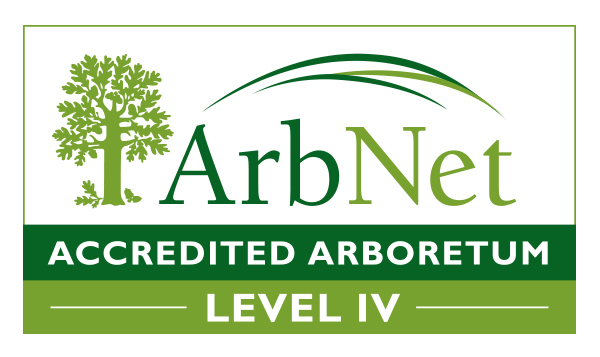Staghorn Sumac is often planted as an ornamental due to the lovely fruit clusters and beautiful autumn foliage. The bark, leaves and fruit are all rich with tannin and thus used to tan hides. The leaves and fruit were boiled down to make ink and dried leaves were used for smoking. The sap was also used as a treatment for warts. It is important to note that the fruits contain tannic acid and should not be boiled for excessive periods of time. Staghorn Sumac thickets provide shelter and food for many birds and mammals such as deer, moose, rabbits, grouse and pheasants.
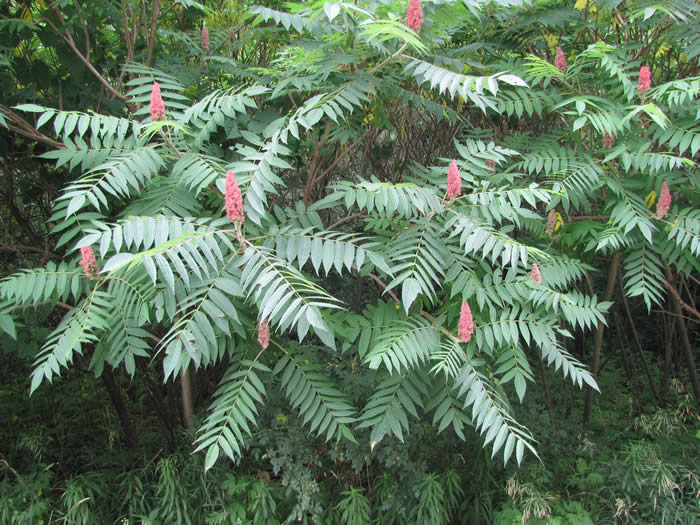
Staghorn Sumac's can grow up to 6 m high, 10 cm in diameter and 50 years old. The trunk is forked and spreading, which is the reason it provides such good cover for many animals. Photo by Chris Earley.
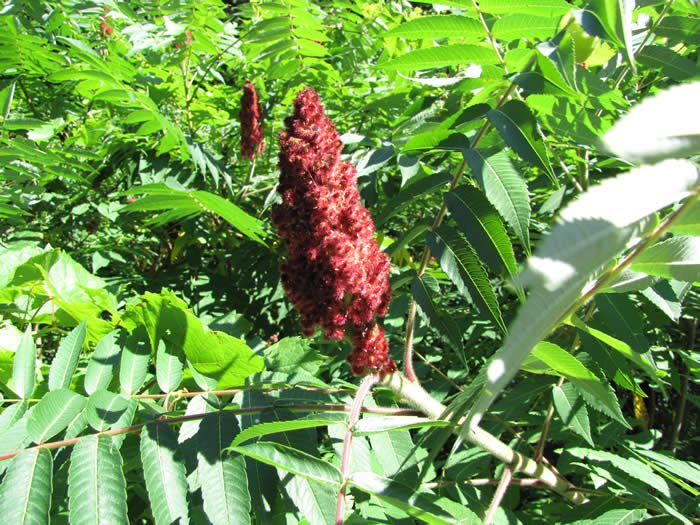
Fruits of the Staghorn Sumac are 3-5 mm across and red and juicy when mature. They are covered with glandular reddish hairs and are located in large cone shaped clusters at the tips of the twigs. They also persist through most of winter. Photo by Chris Earley.
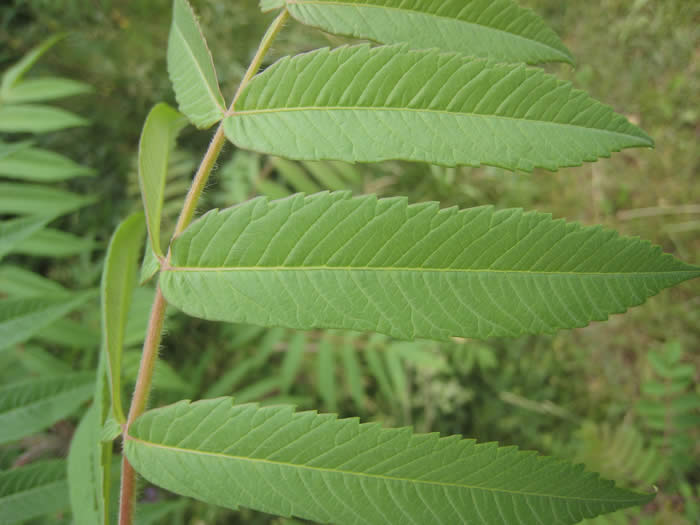
Leaves of the Staghorn Sumac are 5-12 cm long and range from 11-31 per leaflet. They are lance shaped, sharp toothed with fine hairs located on the veins. They turn scarlet or orange in autumn. Photo by Sean Fox.
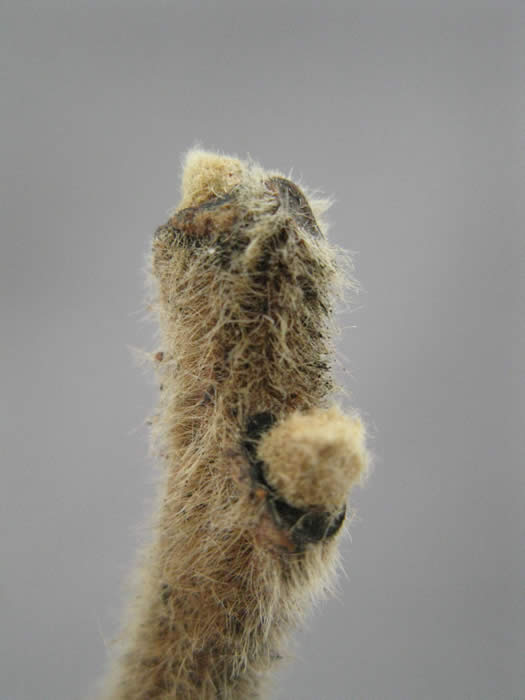
Interesting to note is that Staghorn Sumac's have no terminal bud. The lateral buds are round, measure 5-7 mm long and are covered with dense brown hairs. Photo by Sean Fox.

Ontario Tree Atlas map of non-planted Staghorn Sumac. 1995-1999.
Return to tree listing page [1]
References
Farrar, J.L.. 1995. Trees in Canada. Fitzhenry & Whiteside Ltd. Toronto. ON. 504 pp.
Kershaw, L. 2001. Trees in Ontario: Including tall shrubs. Lone Pine Publishing. Edmonton. AB. 240 pp
Muma, W. 2011. Ontario Trees and Shrubs. [Online] Available: www.ontariotrees.com
OMNR, 2011. Ontario Ministry of Natural Resources: Ontario Tree Atlas. [Online] Available: http://www.mnr.gov.on.ca/en/Business/ClimateChange/2ColumnSubPage/267027.html
OMNR, 2008. Ontario’s Biodiversity: Species at Risk.
